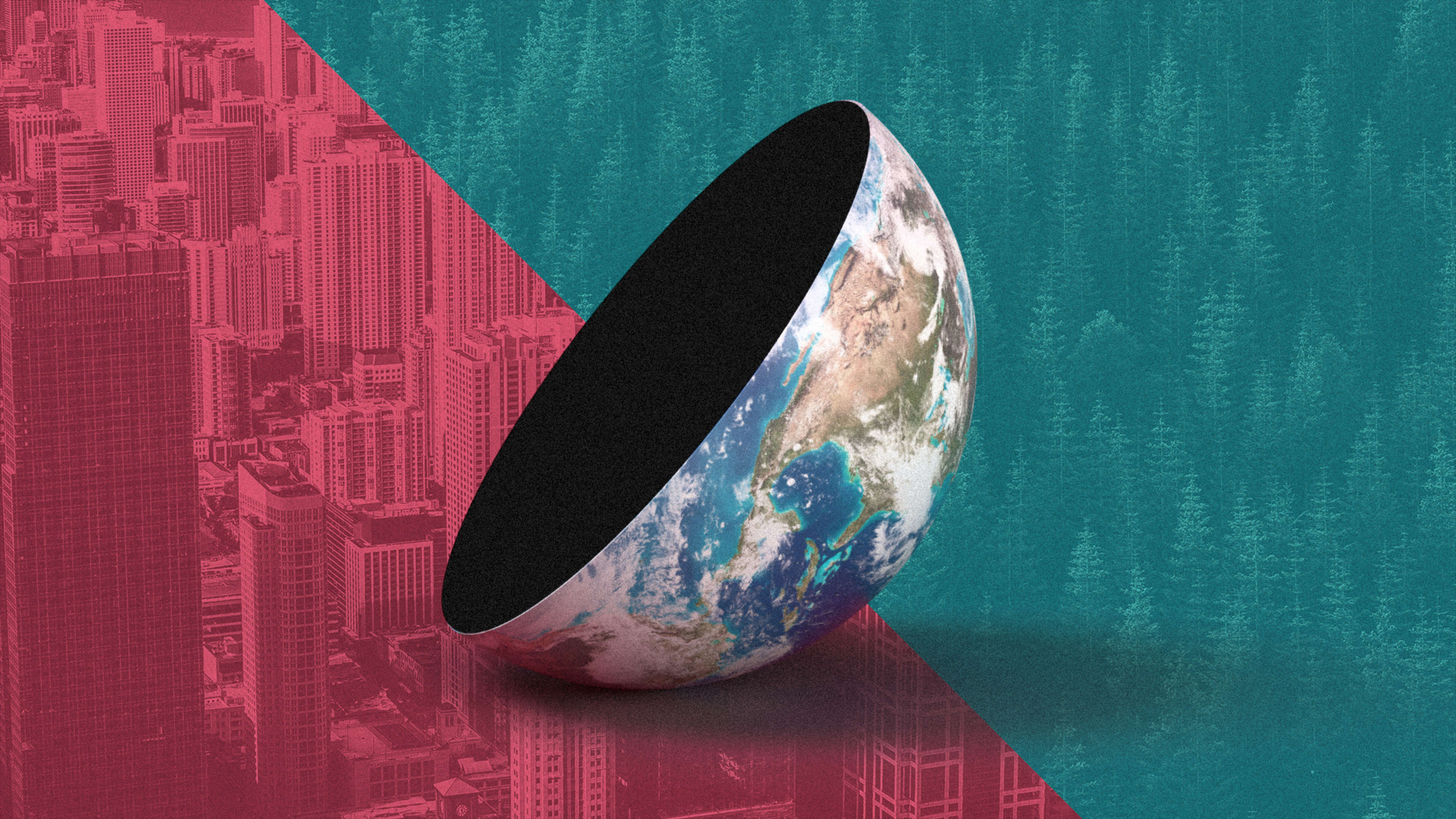To conserve life on Earth (as we know it) in the face of climate change, we need a drastic solution, and a growing movement has a bold plan: set aside half of the planet’s surface for just nature. There’s one problem: There are a lot of people already on much of that land.
Setting aside half of Earth’s surface for only nature could directly affect more than 1 billion people, primarily in lower-middle-income countries, according to recent research out of the University of Cambridge. Could we still make it work?

Wondering what the social and economic consequences of this drastic change would be, the Cambridge scientists looked to assess its effect. To ensure protection for all of Earth’s ecosystems and their relative species, the researchers divided the Earth into 846 discrete “ecoregions,” large, geographical areas defined by their specific habitats, like the Baltic mixed forests or the Great Plains. Then they analyzed global data sets to determine where exactly conservation status could be added to create 50% protection within each ecoregion.
They then calculated how many people currently live in those areas and thus would be directly affected by the Half-Earth proposal. Even while avoiding areas of higher “human footprints” like cities and farmland, the findings, published in the journal Nature Sustainability, suggest that more than 1 billion people will be directly impacted by a Half-Earth strategy.
The benefits of nature conservation are shared among many people, but the costs often fall on a few, and those people are typically quite poor and marginalized already.”
“What kind of impact would depend on the kind of protection implemented,” Chris Sandbrook, a geography lecturer at the University of Cambridge and an author of the journal article, writes in an email. “If people were allowed to live in those areas and continue to harvest some resources, the impact would be relatively minor, whereas if people were removed from the areas and all resource use prevented, the impact would be severe.”
Though the researchers say they recognize the importance of conserving areas on Earth for future life, implementing a Half-Earth plan would “clearly be in conflict” with human activity, they write. And the people most effected would be in developing countries: “The benefits of nature conservation are shared among many people, but the costs often fall on a few, and those people are typically quite poor and marginalized already,” says Sandbrook.
Other researchers have scrutinized Half-Earth’s potential impacts on food production—up to 31% of cropland and 45% of pastureland are at risk of being lost due to that intense level of conservation—as well as its feasibility, considering that hundreds of ecoregions are already in peril with an average of 4% of their natural habitat remaining.
The tricky thing about saving life on Earth is in the balance between conserving nature and allowing humanity to flourish. “On the one hand, all people depend on biodiversity and thriving ecosystems for our food, shelter, clean air and water, and recreational value. So protecting nature is good for people,” says Sandbrook. “However, protecting nature can be very bad for people who are directly affected on the ground—for example if they are evicted to make way for a protected area.”
Half-Earth seems to be growing in popularity as a conservationist movement (The Half-Earth Project did not respond to a request for comment). There’s an annual Half-Earth Day, the most recent of which was held at UC Berkeley in October and was sponsored by the Burt’s Bees Foundation (for the second year in a row). Sustainability researchers and strategic planning experts have written about the Half-Earth Project. But the University of Cambridge researchers say they don’t see Half-Earth supporters addressing the challenge of “how to conserve nature for the benefit of all, without doing excessive harm to the few?” That’s the question they wanted to raise with this paper.
As for Sandbrook specifically, he says he’s not a Half-Earther. “I support the conservation of biodiversity at scale, but in a way that is sympathetic to human needs,” he says. “Humans as part of nature, not separate from it.”
Recognize your brand’s excellence by applying to this year’s Brands That Matter Awards before the early-rate deadline, May 3.
